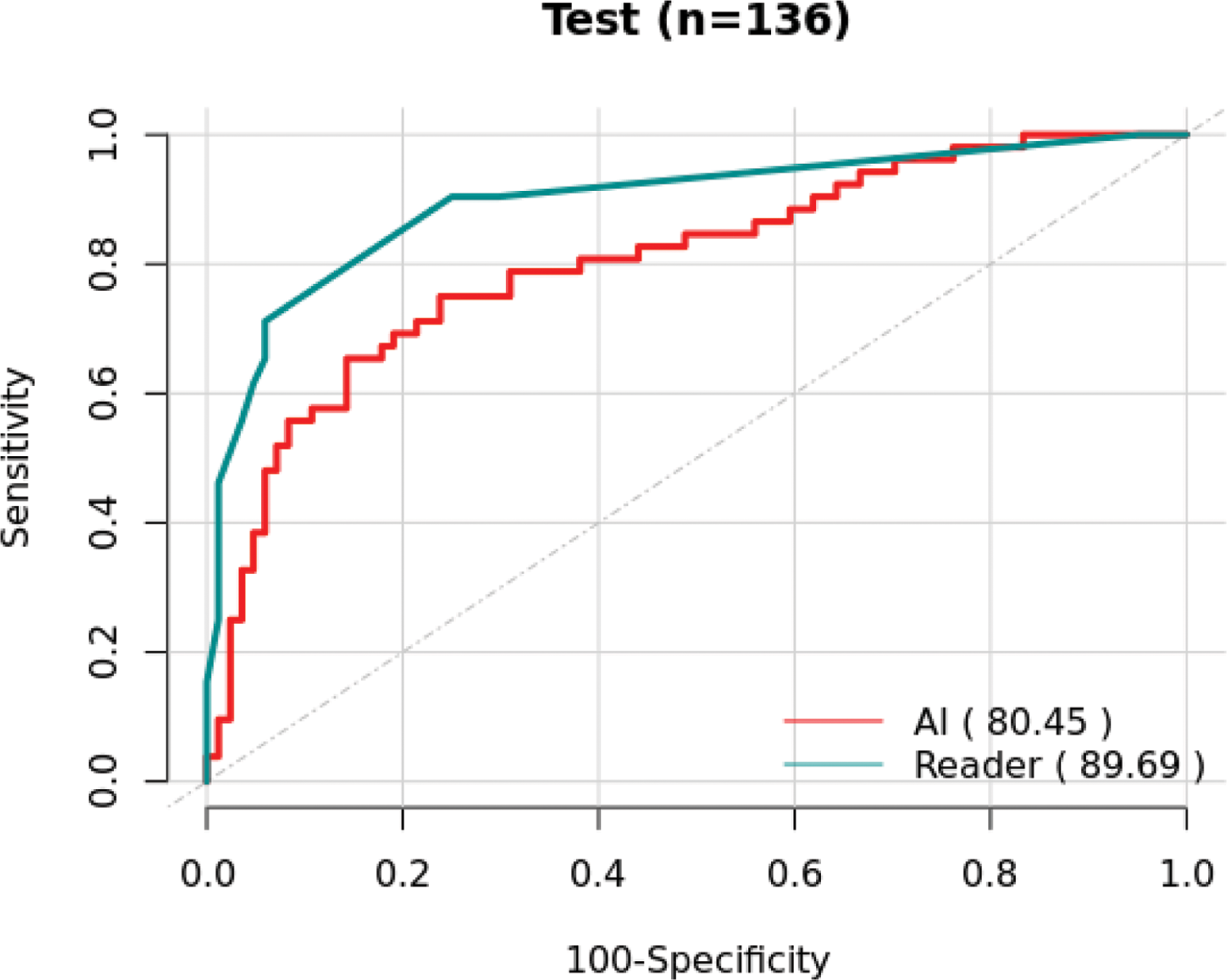

Background: Salivary gland ultrasound (SGUS) is a valuable modality for the diagnosis of primary Sjögren’s syndrome (pSS). However, the widespread use of it as standardized diagnostic tools is limited by inter/intra operator variability.
Objectives: The aim of this study was to evaluate the utility of deep learning-based SGUS image recognition system in the diagnosis of pSS.
Methods: Between June 2022 and Sep 2023, 4017 SGUS images of 678 patients from one center were included in this study. Among them, 259 patients with 1524 images were diagnosed as pSS and 419 patients with 2493 images were non-SS. All the SGUS image data were randomly divided into training dataset (64%), validation dataset (16%) and testing dataset (20%). The SGUS automatic classification model was developed by using a 2D deep residual convolutional network architecture (RESNET-50). The predictive performance was validated by sensitivity, specifcity and area under reciver operating characteristic curve (ROC).
Results: When applying deep learning-based SGUS assessment, it show similar performance with operator based SGUS score system.The specifcity is similar (89.3% vs. 90.0%), while a little bit lower sensitivity (55.8% vs. 61.4%). The area under the ROC were comparable between them (0.805 vs 0.890).
ROC curves of diagnostic performance of deep learning-based SGUS score for pSS

The area under ROC of deep learning-based SGUS recognition system was 0.805 which was comparable with operator based SGUS score system 0.890.
Conclusion: Deep learning-based SGUS image recognition system maybe an objective and promising tool compared to expert-based scoring of SGUS in the diagnosis of pSS. This may support SGUS as an effective and prospective diagnostic tool to supplement current diagnostic methods.
REFERENCES: [1] Olivier A, Hoffmann C, Jousse-Joulin S, Mansour A, Bressollette L, Clement B. Machine and Deep Learning Approaches Applied to Classify Gougerot-Sjögren Syndrome and Jointly Segment Salivary Glands. Bioengineering (Basel). 2023 Nov 3;10(11):1283.
[2] Vukicevic AM, Radovic M, Zabotti A, Milic V, Hocevar A, Callegher SZ, De Lucia O, De Vita S, Filipovic N. Deep learning segmentation of Primary Sjögren’s syndrome affected salivary glands from ultrasonography images. Comput Biol Med. 2021 Feb;129:104154.
Acknowledgements: NIL.
Disclosure of Interests: None declared.